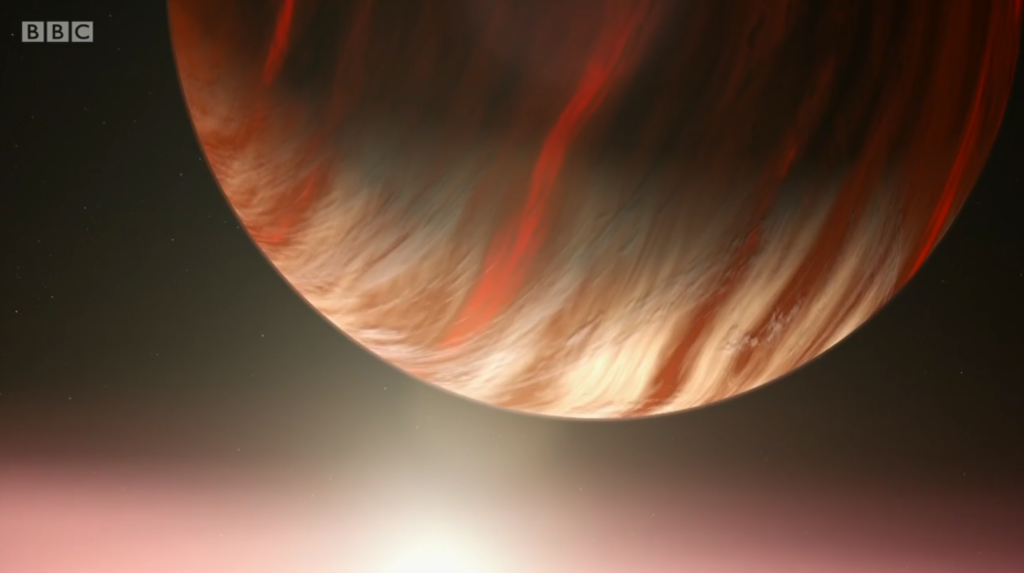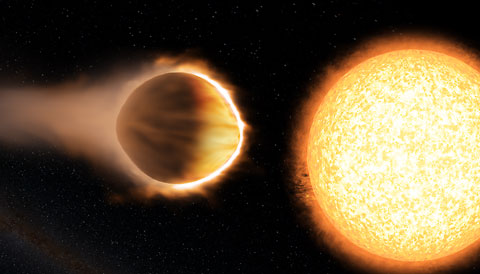WASP-12b: The Exoplanet Being Devoured by Its Star

Discover the captivating story of WASP-12b, an exoplanet locked in a tragic battle with its own star. Explore how this distant world is being devoured, as we delve into its unique proximity and the inevitable fate that awaits it. Uncover the fascinating insights gained from studying WASP-12b, shedding light on the evolution of planetary systems. Join us on a journey through the wonders of the universe, where destruction and beauty intertwine in the cosmic dance of WASP-12b.
The vast universe is full of mysteries and fascinating discoveries. In the field of astronomy, one of the most astonishing findings is the exoplanet WASP-12b, a distant world that is facing a tragic fate. In this article, we will explore the fascinating details of this exoplanet and how it is being devoured by its own star.

Discovering WASP-12b
WASP-12b was discovered in 2008 by the exoplanet search program known as SuperWASP. This giant exoplanet is located approximately 1,400 light-years away from Earth, in the constellation Auriga. However, what makes it truly special is its tragic proximity to its star, WASP-12.
A Close Dance with the Star
WASP-12b orbits its star at an extremely close distance, completing one orbit in just 26 hours. This means it is at a distance of approximately 3 million kilometers from its star, much closer than Mercury is to the Sun. The proximity is so extreme that WASP-12b experiences unbearable temperatures and extreme gravitational forces.
Devoured by Its Star
Due to its proximity, WASP-12b is in a constant state of siege. The parent star is literally devouring the exoplanet. Astronomers have observed that the outer layers of the exoplanet are evaporating and forming a cloud of material around the star. This phenomenon is known as "tidal evaporation" and is caused by the intense radiation and gravitational force of the star.
The Inevitable Fate
The lifespan of WASP-12b is rapidly approaching its end. Calculations indicate that in a few million years, the exoplanet will have lost a significant amount of mass due to tidal evaporation. Eventually, it is expected that WASP-12b will be completely engulfed by its star, bringing an end to its existence.
Learning from WASP-12b
Although WASP-12b is in a unique and extreme situation, its study provides valuable insights into the evolution of planetary systems. Scientists have been able to gather data on the exoplanet's atmosphere and its interaction with the star. This has led to a better understanding of planetary formation and destruction processes.
Conclusion:
WASP-12b is a fascinating example of an exoplanet that is facing a tragic fate. As advancements in astronomical technology continue, we can expect to discover more planets in similar situations. These findings will deepen our understanding of the universe and the diverse paths that planetary systems can take. In the meantime, we will continue to marvel at the astonishing complexity and beauty of the cosmos.
Deja una respuesta

IMPRESCINDIBLES DE LA SEMANA